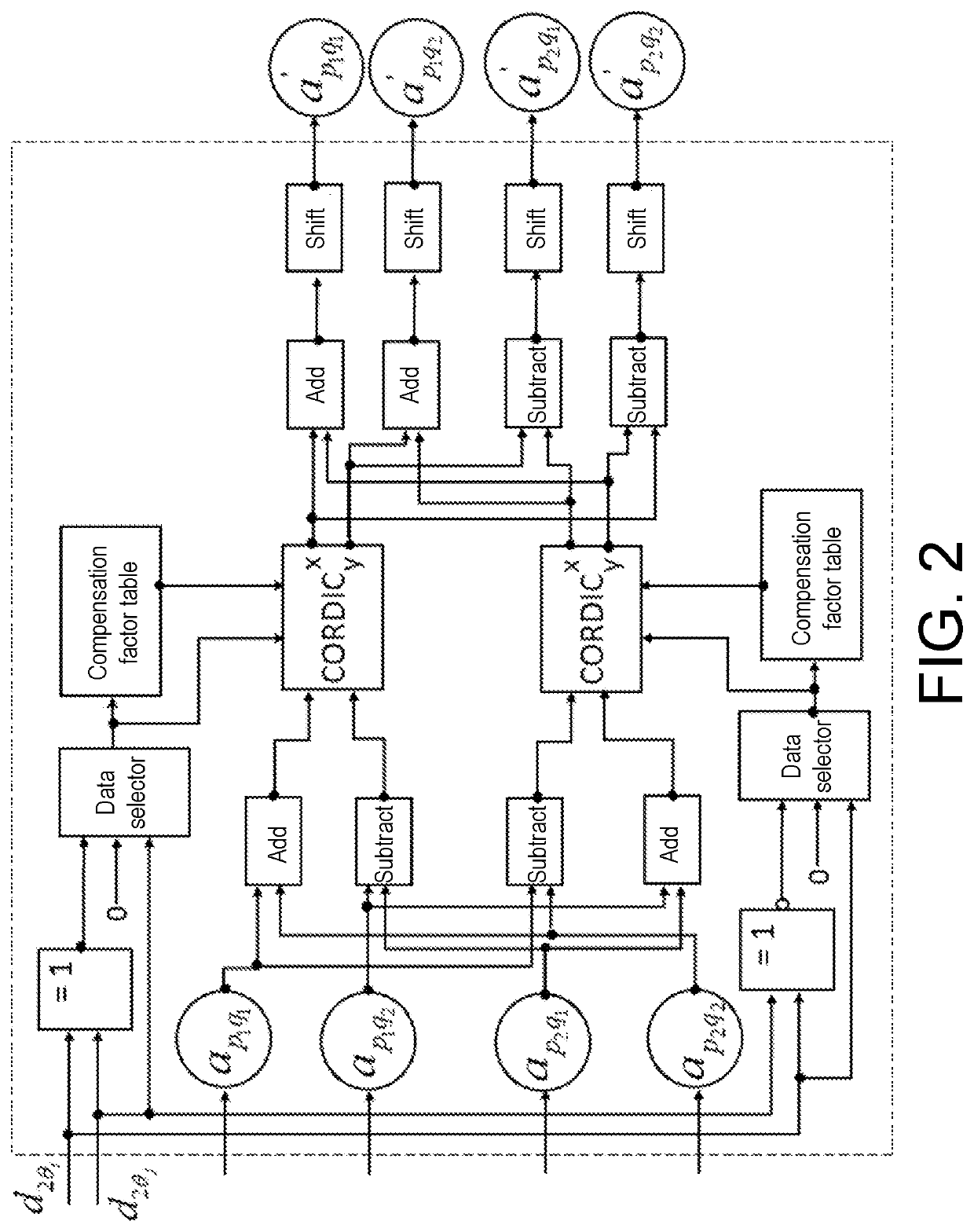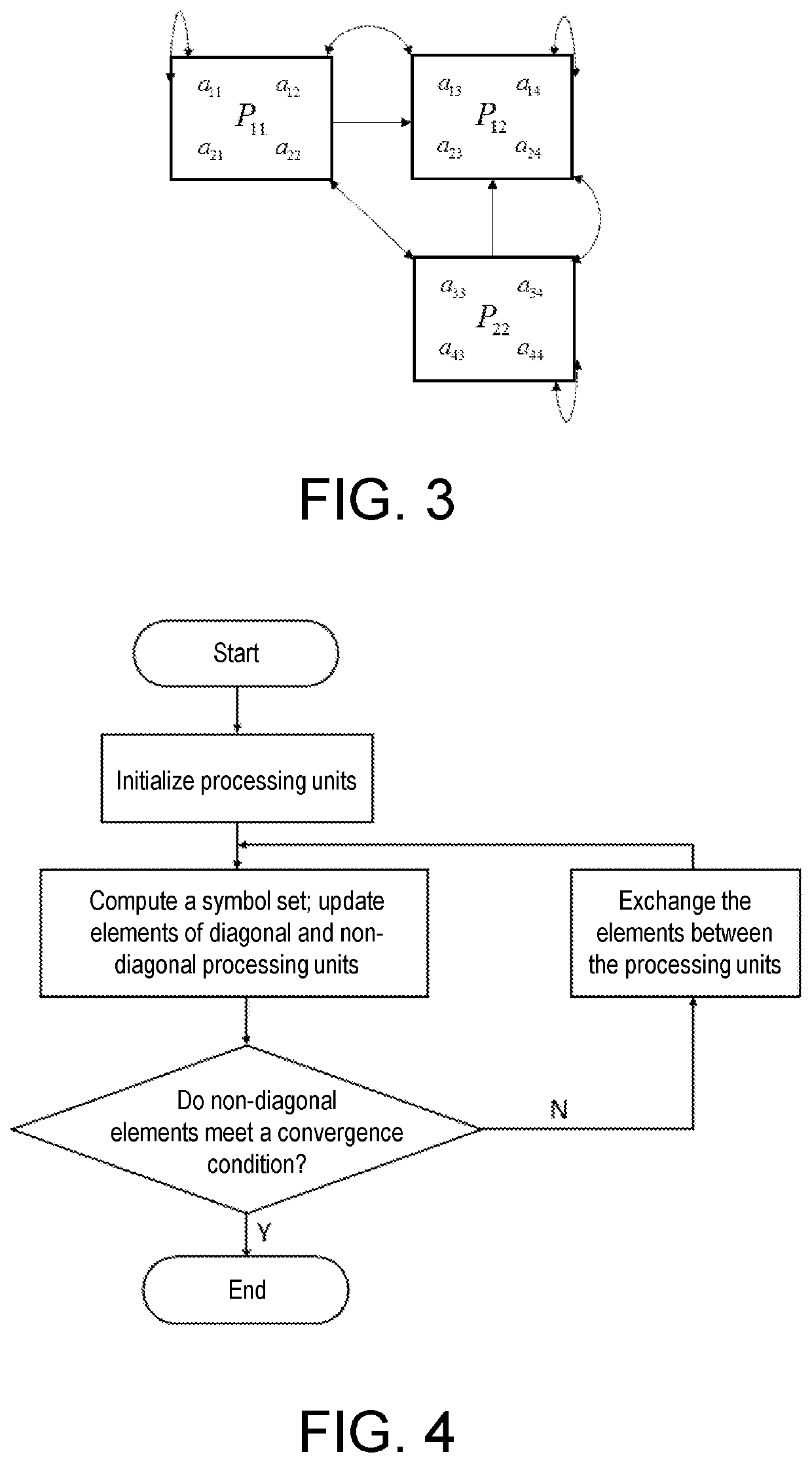Method of realizing accelerated parallel jacobi computing for FPGA
- Summary
- Abstract
- Description
- Claims
- Application Information
AI Technical Summary
Benefits of technology
Problems solved by technology
Method used
Image
Examples
Embodiment Construction
[0062]In the following, details of the invention will be described with reference to the accompanying drawings in combination with exemplary embodiments of the invention.
[0063]The framework realized in an FPGA of the invention mainly includes a diagonal processor and a non-diagonal processor. The framework of the diagonal processor is as shown in FIG. 1, and the framework of the non-diagonal processor is as shown in FIG. 2. A framework of a processor array is as shown in FIG. 3. A flowchart for executing a computing method is as shown in FIG. 4.
[0064]The embodiment of the invention and the implementation process thereof are described in the following.
[0065]The specific implementation processes of the embodiment are realized in a Xilinx Virtex-7 XC7VX690T FPGA chip. Specifically, wireless signals emitted by a collector drone with a four-element antenna array is adopted in the implementation, and the signal incident direction is 0 degrees. A 4×4 real symmetric covariance matrix obtain...
PUM
 Login to View More
Login to View More Abstract
Description
Claims
Application Information
 Login to View More
Login to View More - R&D
- Intellectual Property
- Life Sciences
- Materials
- Tech Scout
- Unparalleled Data Quality
- Higher Quality Content
- 60% Fewer Hallucinations
Browse by: Latest US Patents, China's latest patents, Technical Efficacy Thesaurus, Application Domain, Technology Topic, Popular Technical Reports.
© 2025 PatSnap. All rights reserved.Legal|Privacy policy|Modern Slavery Act Transparency Statement|Sitemap|About US| Contact US: help@patsnap.com



